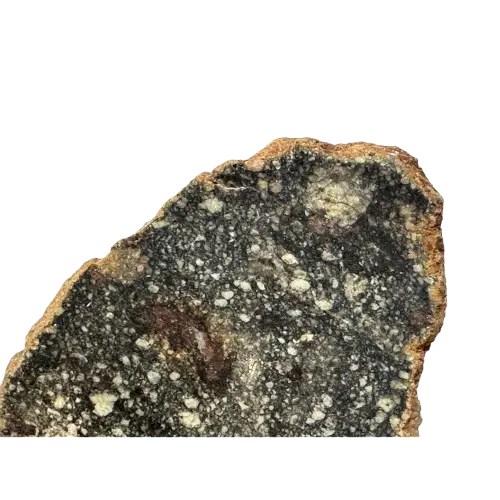New Items from Denver 2024 show
The 2023 Denver Fossil & Mineral Show offered an exciting glimpse into the ancient past, outer space, and the dazzling world of gemstones. From lunar and Martian mteorites to cave bear fossils and exquisite gemhttps://www.prehistoricoregon.comstones like amethyst, this year’s show was a treasure trove for collectors, scientists, and enthusiasts alike. With hundreds of exhibits, the show presented a variety of new discoveries and rare specimens, drawing attention from across the globe.
Meteorites: Lunar, Martian, and Campo del Cielo
One of the highlights of the show was the incredible display of meteorites, including specimens from the Moon and Mars. Lunar meteorites, fragments of the Moon blasted off by impacts, are incredibly rare and highly prized. These meteorites, composed of basaltic rock, allow scientists and collectors to study the surface of the Moon without having to leave Earth. The show featured several lunar meteorite specimens, their rough, cratered surfaces telling the story of cosmic collisions that occurred millions of years ago.
Even more rare were the Martian meteorites, pieces of Mars that offer a glimpse into the geological history of the Red Planet. These specimens, composed of volcanic rock and rich in olivine and pyroxene minerals, provide key information about Mars’ ancient volcanic activity and surface conditions. The ability to handle these otherworldly fragments, which once existed on another planet, added a tangible sense of awe to the experience.
Additionally, attendees marveled at pieces of the Campodel Cielo meteorites, which fell in Argentina around 4,000 years ago. These iron meteorites, often large and metallic, are relics of an ancient meteor shower that struck Earth in prehistoric times. The Campo del Cielo specimens, with their intricate fusion crusts and heavy iron content, are a reminder of the powerful forces from space that have shaped our planet.
Fossils: A Cave Bear Revival
Fossil collectors were captivated by the debut of a nearly complete cave bear skeleton, discovered in Europe. Cave bears, which roamed Europe and Asia during the Pleistocene Epoch, went extinct around 24,000 years ago. This particular skeleton was beautifully preserved, allowing paleontologists to study the massive creature’s anatomy in great detail. Cave bears are known for their imposing size and herbivorous diet, and this specimen helped reconstruct how they may have lived and survived during the Ice Age.
Alongside the cave bear, there were also stunning displays of ammonite fossils, showing off their signature spiral shells. Ammonites, marine mollusks that went extinct 65 million years ago, are frequently found in sedimentary rock layers. Their colorful and detailed patterns on display were captivating, especially specimens from Morocco, which had been polished to reveal the brilliant iridescence of their shells.
Minerals and Gemstones: Amethyst and Gem Bracelets
The mineral section of the show dazzled with amethyst as a standout gemstone. Known for its rich purple hue, amethyst is a type of quartz that forms in geodes and volcanic rocks. Large geodes of amethyst from Brazil and Uruguay were showcased, with their deep violet crystals gleaming under the show lights. The purity and size of these amethyst formations impressed collectors and gemstone aficionados alike.
Gemstone bracelets were also a significant attraction, particularly those made from precious and semi-precious stones such as turquoise, jasper, and malachite. These bracelets, prized for their craftsmanship and vibrant colors, allowed visitors to take a piece of the Earth’s natural beauty home with them. The focus on wearable gemstones provided a connection between geological history and modern fashion, linking ancient minerals with contemporary art.
Ammonites and More
In addition to the ammonites, the show featured a variety of other fascinating fossils, including shark teeth, trilobites, and dinosaur bones. These fossils, some millions of years old, offer windows into ancient ecosystems and the creatures that once roamed both land and sea. Particularly striking were the massive Mosasaur teeth, which drew attention due to their size and the fearsome reputation of these ancient marine reptiles.
The 2023 Denver Fossil & Mineral Show delivered a comprehensive look at Earth’s history, blending the study of outer space with fossils and minerals from deep within the planet. Whether it was handling a piece of Mars, gazing at the massive skull of a cave bear, or marveling at the beauty of amethyst, this event offered something for everyone—an unforgettable journey through time and space.




